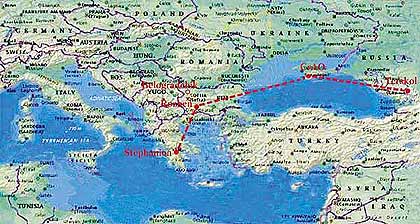|
|
Simultaneous
observations with the Synchronous Network of Optical Telescopes
to study microvariability of stars
The Synchronous Network of Optical Telescopes - a New Facility to Explore Short-Term Phenomena.
The Synchronous Network of distant Telescopes (SNT), which involves several telescopes with diameter (0.6 m - 2.0 m) from four observatories in Ukraine, Russia, Bulgaria, and Greece, was developed by the end of the 1990s. It gives particularly a greater chance to study microvariability of stars, because simultaneous observations at several distant telescopes allow us to suppress the atmospheric and photon noises and to increase significantly a potential achieved precision.
The network can operate as an interferometer, too. There are two competing schemes producing interference in astronomy, one combining several telescopes as an interferometric array, the other capable of count correlation measurements with several telescopes. The correlation scheme is known as the Intensity Interferometer. Almost all of the interferometers of today use the Michelson beam combination among several phased pupils with the baselines of tens meters.
|

| | The SNT Interferometer (SNTI) can potentially produce results like those of based on the classic Michelson scheme. The SNTI provides a baseline of continental scale about of 1500 km, too. Several fairly separated telescopes are operating synchronously and equipped with the photon counting photometers. The data network synchronization is based on GPS receiver to discipline relative to UTC within one microsecond. Key component of the event measurement system includes original scheme of probabilistic identification of coincident counts. Scientific programs for the SNTI include: detection the ultrahigh-frequency variability by consideration of the Bose-Einstein degeneracy, interferometric imaging, as well as a variety of other astrophysical objectives.
Meanwhile some interesting results have been obtained from simultaneous observations of the flare star EV Lacertae [s. Zhilyaev B.E., Romanyuk Ya.O., et al. Astron. and Astrophys.-2000.-364.-P.641-645].
|

|
|
| Telescopes & Equipment |
 |

|
 |
 |
 |
 |
 |
 |

|
 |

|
 |

|
 |
| Some of the observatory activities |
 |
 |
 |
 |
 |
 |
 |
 |
 |  |
|

|
|
|
|









